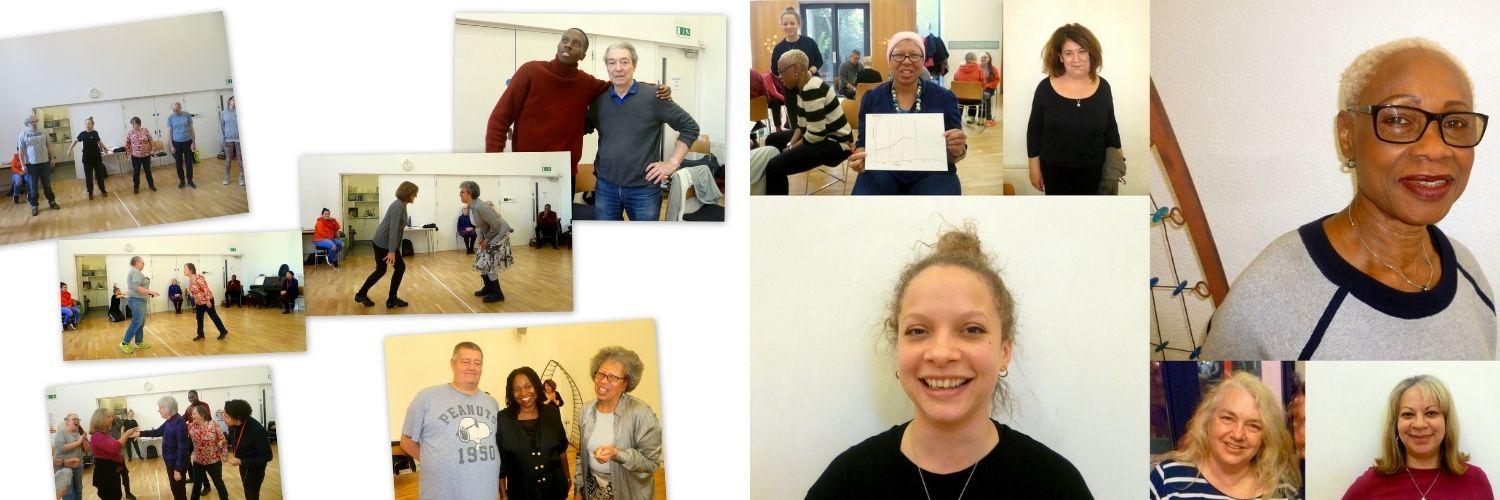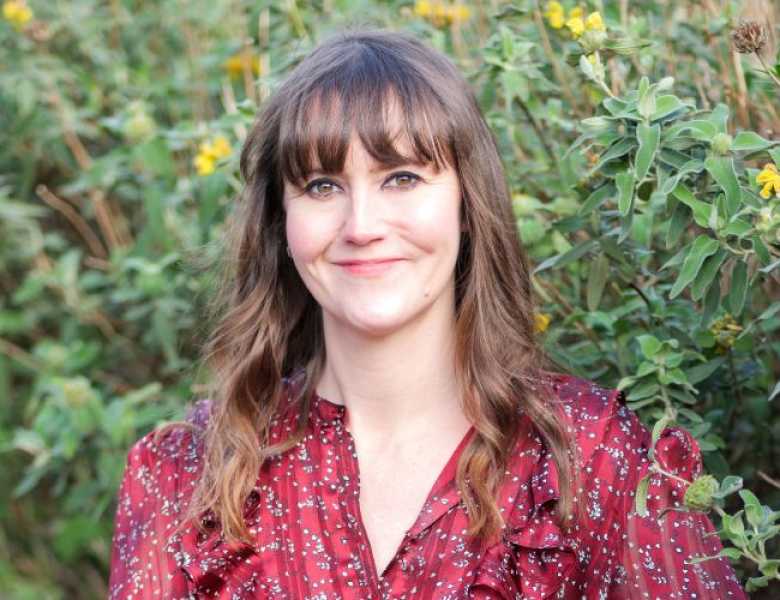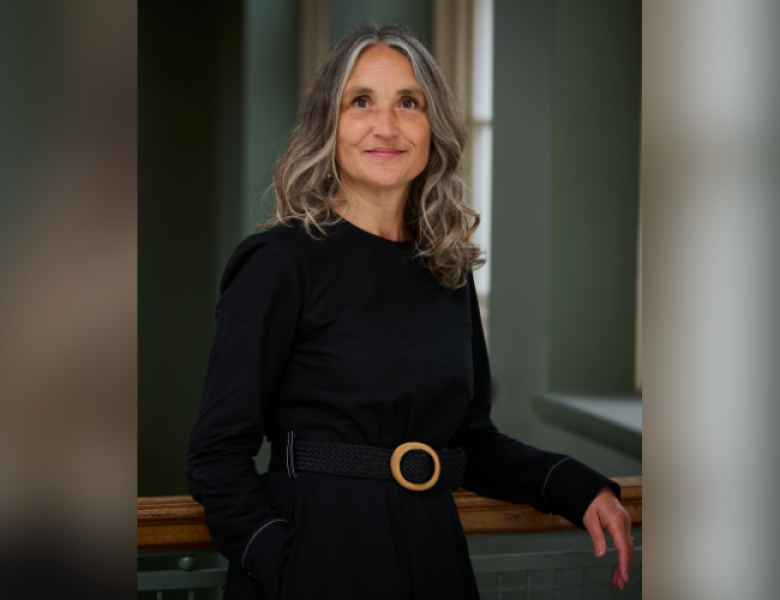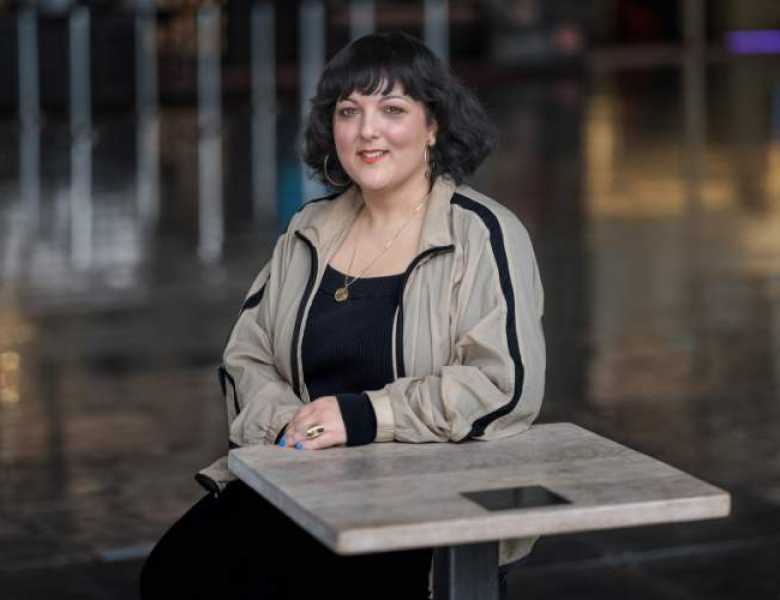
Neighbourhood Play is Taking Part’s recurring movement project for people aged 55+ who are local to the Young Vic. With a focus on joy, playfulness and self-expression, participants come together for a series of workshops to devise their own performance in response to a Young Vic production.
To celebrate two years of running the project, we sat down for a conversation with movement director and facilitator Corinne Meredith and Director of Taking Part, Shereen Jasmin Phillips, to talk about the past two years and the transition to working online during the pandemic.
Tell us a little bit about Neighbourhood Play
Corinne Meredith: Neighbourhood Play is an informal, movement-based and participant-led project we’ve been running for two years, for people aged 55+. The participants watch a Young Vic production, and then over the following three weeks the group comes together for movement workshops to devise an informal piece which we then share to an audience in the final session.
What prompted you to set up Neighbourhood Play?
Shereen Jasmin Phillips: It was the first project that I proposed when I started in my previous role as Neighbourhood Theatre Producer. We wanted to set something up for people who weren’t able to commit to one of our longer-term projects or productions. I’d worked with Corinne before on Public Acts at the National Theatre, and spent time with her at an organisation called Open Age where she created a great energy in the space with older people and really brought out their confidence and sense of play. Neighbourhood Play is aimed at people who are just under retirement age, and we wanted it to be accessible to everybody no matter what their needs.
What can we expect from a Neighbourhood Play sharing?
CM: One of my favourite series was when we looked at Bronx Gothic and we were talking about childhood. It wasn’t a joyful production at all, but our sharing became a joyful celebration of the participant's childhoods. We use music all the time, and they chose it all - we had all of them dancing to songs that reminded them of their childhood. And when we did the sessions around the show Nora: A Doll’s House, we looked at the different eras from that production, and explored movement and dance from those – so we looked at the Waltz, the Twist and then we all ended up flossing because the last time period was 2018! The participants often bring that up as one of their highlights, learning to floss. My main highlights are when they just get to be themselves and have fun and express whatever it is in them that they want to express.
SJP: Everyone in Neighbourhood Play is hilarious – they’re all laughing at themselves, at each other, it’s all done in jest – it’s just play. Some of the reasons why it’s called Neighbourhood Play is the play on the word ‘play’ – you watch a play at the theatre and then you’re going to play around with it, and you see that playfulness in the end result. Even when things go wrong people are laughing.
How has Neighbourhood Play developed over the past two years?
SJP: It’s progressed and evolved and become better every time. And by ‘better’, I mean it’s just become more imaginative, more innovate, more anti-disciplinary than before, which I think is what’s really special about it.
CM: That comes with the group having grown in confidence to share their ideas as well. They know that in this setting, anything goes, everything is valued, and they all have something to offer. Because the group changes each time, generally you have some new people, so it does shift the dynamic. It really is a reflection of them and what they’re bringing.
What’s been your favourite moment?
CM: We ran a 6-week version of this project with an organisation called Single Homeless Project and it was just really special. There have been so many highlights but just to see that it was a transferrable thing was great.
SJP: I think what was really nice was the celebration of the past two years of running Neighbourhood Play, which we held on Zoom at the end of 2020. It came at a specific time when we were all really missing the Young Vic building – to have something that felt like a living memory of that made us go “oh yeah, that was fun actually”. It made a lot of people cry! It’s nice for everyone to remember why we want to be part of this organisation in the first place.
We usually run the sessions at St Andrews opposite the Young Vic, and having access to the kitchen and community space there meant people brought food – it has a real impromptu pot-luck energy. That sense of collectiveness is really there, which I love about Neighbourhood Theatre generally, but you particularly see it thriving in Neighbourhood Play. I’d give anything right now to walk over to St Andrews on a sunny day and watch a Neighbourhood Play sharing in person.
The sessions moved online in spring 2020, after lockdown was announced. How did you approach that transition to Zoom?
CM: When lockdown was announced we were about to run some sessions in response to the Young Vic’s production of Orfeus: A House Music Opera. At that point, we were all still getting used to Zoom so we decided to send out some resource packs and creative tasks for participants to engage with in their own time. We were really aware that everyone was going through different things and wanted to make it as optional, stress-free and low stakes as possible. After that we decided to try running the sessions on Zoom, for the series which would have accompanied our production of Hamlet, and it was really successful! Neighbourhood Play has become something a bit different without the Young Vic productions to respond to, but with Hamlet we looked at the RSC version online so we could still use the play as our inspiration.
A big part of Neighbourhood Play for me is the connection the group makes and the time for being social and connecting with each other. During lockdown, they didn’t really know how each other were doing, so when everyone’s faces all popped up on the screen at the start, they could see that they were all there and ok - I think that was a really brilliant thing to come out of it. It was a way to stay connected.
People told us they really appreciated being able to attend the sessions, even if they weren’t feeling great that day. The physical exertion of getting there in person was already quite a lot for some people, so for them to be able to come to their living rooms and just switch on, they really liked that.
Trying to support 20-odd people who’ve perhaps never used online platforms before was a challenge at times. We obviously had the brilliant team from the Young Vic who supported us. And as we got further through the weeks the group became much more confident about it, and I think it gave them the confidence to use Zoom in other settings as well.
Do you think working on Neighbourhood Play has changed your practice?
CM: 100%. We, as an industry, underestimate perhaps the impact that work like this has on people like me as well as on the participants. It has a huge impact on me personally as well as professionally. I’ve realised that more over this pandemic - I know I’ve always loved the work I do, but it’s just been put into perspective how important it is and how much I value those relationships with participants. I learn things from them every single time I see them; about work, but also about life, and different perspectives, and how different people can work together.
SJP: There’s something about the silliness we have as children – that we lose as we get older – that is brought back in these sessions. You’re not put down for saying or doing something that isn’t serious. That’s the version of you that we’re asking you to bring to this space - we’re not engaging with you as a parent, grandparent or older person, just whoever you are when you have no limitations. And I don’t think we have many of those spaces as adults. Where is that playground for adults to express yourself really?
What can we expect from Neighbourhood Play in the future?
SJP: We’ll be responding to the next show – whenever we’re next able to be in the building – and then we’ll see what happens from there. It’s an intrinsic part of what we do now at the Young Vic, it’s about play and there is always more emphasis on the process than the product.
CM: That is for me my practice across everything I do – it’s about the people. It doesn’t need a huge budget to be excellent.
SJP: Its reframing what excellence means – for me the excellence comes from the humanity and the fact that you can tell that people feel they have the confidence and safe space to creatively respond in ways that show their natural talent. To me, that is excellence.


